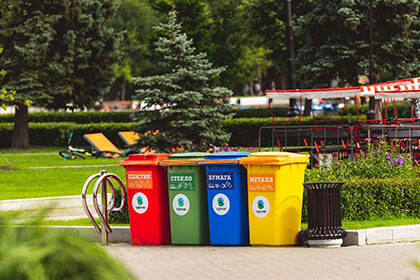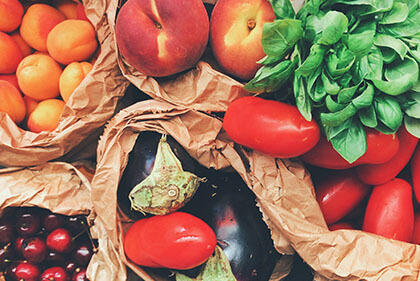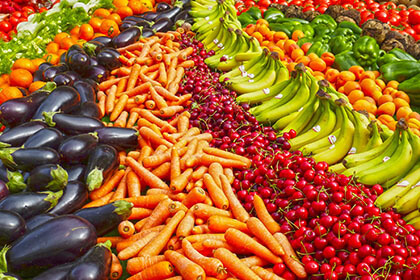1.3 billion tons of food is wasted globally – with 40 percent of it coming from restaurants and other different food businesses. Here are some of the ideas I’ve come up with to reduce restaurant food waste!
1. Adopt restaurant waste management  Organising waste management will help to keep restaurant food waste to a minimum, and make use of existing waste in the best possible way. However, to organise successful waste management, you will need to:
Organising waste management will help to keep restaurant food waste to a minimum, and make use of existing waste in the best possible way. However, to organise successful waste management, you will need to:
• Build a team of responsible individuals for this job
• Track and evaluate waste in a restaurant manually or digitally
• Analyse the documentation on bought items and consider your business decisions
• Review inventory regularly in order to compare buying and quantity of waste
• Trim the menu to reduce the amount of leftovers
• Reuse everything that can be reused
2. Have kitchen prep lists for cooks  Most restaurants use prep and part methods to save time, but this only results in over-prepared food which may not be used. Giving every cook a kitchen prep list would be immensely helpful as it will tell them how many ingredients to prepare each day and in what amount. These techniques will help reduce the amount of over prepared food and this decrease food waste. It is a win-win situation as your customers will also get to enjoy freshly prepared food. Do not forget to follow the 2 hour/4 hour rule and keep the food out of the temperature danger zone (5°C – 60°C).
Most restaurants use prep and part methods to save time, but this only results in over-prepared food which may not be used. Giving every cook a kitchen prep list would be immensely helpful as it will tell them how many ingredients to prepare each day and in what amount. These techniques will help reduce the amount of over prepared food and this decrease food waste. It is a win-win situation as your customers will also get to enjoy freshly prepared food. Do not forget to follow the 2 hour/4 hour rule and keep the food out of the temperature danger zone (5°C – 60°C).
3. Manage restaurant inventory
An overstocked inventory may give you the feeling of being prepared, but it actually leads to significant food waste. This can happen by misplacing your food items or forgetting about them. In some cases, they might even be stolen!  Most restaurants tend to order more ingredients to be safe. However, most food items typically are not used and exceed a restaurant’s expenses. However, this issue can be dealt with by observing order and usage trends and then determining the ideal quantity to purchase. You might even consider using similar ingredients across the menu.
Most restaurants tend to order more ingredients to be safe. However, most food items typically are not used and exceed a restaurant’s expenses. However, this issue can be dealt with by observing order and usage trends and then determining the ideal quantity to purchase. You might even consider using similar ingredients across the menu.
A lot of ingredients get thrown away because they get expired. The best way to manage inventory is to employ the first-in, first-out (FIFO) method. Previously purchased items and those with earlier expiry dates should be placed in the front row to make sure they are used first. Make sure that everyone who handles ingredients in the kitchen is adequately trained in first in, first out inventory management techniques.
4. Reuse food  Waste is inevitable when it comes to food preparation. However, you can find creative and innovative ways to use leftover (but fresh) ingredients. You could even turn them into other dishes! For example, vegetable scraps can be used to make vegetable stock, and shred leftover chicken can also be used to make chicken and vegetable soup. Instead of throwing stale bread, it can be roasted into the oven for a little time and used to make breadcrumbs. Food leftovers and ingredients which are safe to consume can be used to make staff meals. It will also allow the restaurant to save money on staff treats.
Waste is inevitable when it comes to food preparation. However, you can find creative and innovative ways to use leftover (but fresh) ingredients. You could even turn them into other dishes! For example, vegetable scraps can be used to make vegetable stock, and shred leftover chicken can also be used to make chicken and vegetable soup. Instead of throwing stale bread, it can be roasted into the oven for a little time and used to make breadcrumbs. Food leftovers and ingredients which are safe to consume can be used to make staff meals. It will also allow the restaurant to save money on staff treats.
5. Mention dates on frozen items
For frozen items, mark them with dates, so you use them before they get stored away for too long. Make sure the staff understands expiration terms like 'best by', 'use by' and 'sell by' to avoid food waste.
6. Measure food waste  Through tracking food usage and waste, restaurants can scale back production while still meeting their customer demands. A 'food waste inventory' can assist in identifying how much and in which areas food is wasted. This could help owners and managers to implement changes accordingly, such as tweaks in the menu, smaller portions or substitutions. Monitor progress and adjust accordingly.
Through tracking food usage and waste, restaurants can scale back production while still meeting their customer demands. A 'food waste inventory' can assist in identifying how much and in which areas food is wasted. This could help owners and managers to implement changes accordingly, such as tweaks in the menu, smaller portions or substitutions. Monitor progress and adjust accordingly.
7. Predict food orders
Having a system in place to assist in accurate food order prediction is a great way to reduce food waste. It can be done manually or with the help of digital technology, such as predictive ordering technology. By providing more accurate data and a better understanding of food order patterns, it will ultimately lead to better control over the kitchen and less waste and better profit.
8. Make customers a part of the fight against waste  Offering customers the option to take the left-overs from their meals home can help strengthen the business’ reputation as a socially and environmentally conscious establishment and ensure that customers get to make the most of their dining experience.
Offering customers the option to take the left-overs from their meals home can help strengthen the business’ reputation as a socially and environmentally conscious establishment and ensure that customers get to make the most of their dining experience.
Food waste management is a global challenge and a range of new technologies are emerging to help homes and businesses handle it more efficiently. With the right mix of technology, vigilance and careful planning, reducing waste is an achievable goal. It is an area worth investigating: in addition to the obvious benefit of improved profitability, it gives businesses a chance to engage better with customers by demonstrating a social conscience and commitment to green values.
.png?width=1571&height=766&name=CFD%20knife%20and%20fork%20logo%20(carbonfriendlydining.org).png)


